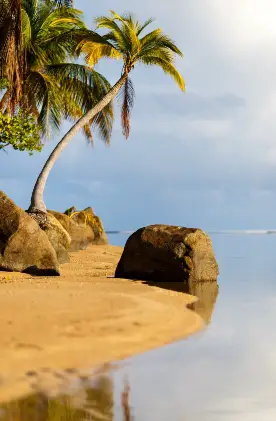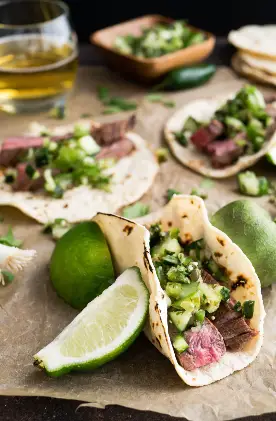Hello and welcome to my article on the Greater Yellowstone Ecosystem of the USA! My name is Charles Post. I’m an ecologist, storyteller, Explorers Club Fellow, member of the IUCN Species Survival Commission, co-founder of the Nature Project (501c3) and a brand strategy consultant.
I live in Montana and grew up in California. Most of my childhood was spent outside in nature with either a net and bucket in hand or a fishing pole. I went on to earn a B.S. and Master’s degree in Ecology from U.C. Berkeley, and spent many field seasons as a research scientist studying topics from songbirds and salamanders to salmonids and freshwater insects.
After completing my research, I started thinking about how I could communicate science, and build a bridge between the public and the field science world. This led to filmmaking, which took up most of my time for a few years up until 2019. In that time I co-directed award winning films, one recognized as a Vimeo staff pick, covering topics from feral horses in the West to bird of prey migrations and how they bind hemispheres.
I met my wife, Rachel as I was fledging graduate school and wading into this DIY career. We were engaged a few months later and then got married. It’s been the best adventure of my life. These days, we spend our time loving a samoyed puppy, Knute and dreaming up an exciting future.



Living in the Greater Yellowstone System
I live in the Greater Yellowstone Ecosystem, so my connection to this place has stemmed from living amongst it. We have hundreds of elk who overwinter in our field, songbirds who nest in our fields and along our fence lines, wolves and mountain lions who hunt deer in the creek. Just in the past few weeks, elk calves have been born with the arrival of summer.
I have been here for almost five years and have only scratched the surface of all there is to experience. I’m here because this is where my wife is from. She is a sixth generation Montanan – born into a Scottish family who came to farm. We spend a lot of time exploring the mountains that surround the Gallatin Valley. Every so often we venture into Yellowstone, especially in winter to look for wolves in the Lamar Valley or songbirds in spring.
The Greater Yellowstone System is a wild place that covers areas of Idaho, Wyoming and Montana. Huge tracts of interconnected ecosystems allow the great herds to persist, which means predators are also able to thrive. This is one of the most sparsely populated spots in the US. Wildlife have room to do their thing unmolested by development. You feel like you are going back in time before “progress at any cost” left its mark on wildlife.
My favorite place in the Greater Yellowstone Ecosystem is a beautiful little basin tucked away in the Bridger Mountains. There is a small lake and cirque, which few people visit, and so there are often mountain goats and birds hanging around. Rachel likes to paint up there, and I will often lean into a boulder and look around the area with my binoculars.



My Favorite Memories at the Greater Yellowstone Ecosystem
Each spring at the Greater Yellowstone Ecosystem I wait for the elk to come down to our field to have their babies. This is just a few weeks after most of the songbirds arrive, and the tree swallows, which may have just flown miles up from Costa Rica, arrive to build their nests in the nest boxes that we have throughout our property. This is my favorite memory each year.
It’s a time when the world here seems to be waking up from a long winter nap. The flowers are starting to bloom, and the fields are tall and green. There is snow up high, and evenings in the mountains are cool and clear. There is almost no better time at the Greater Yellowstone Ecosystem.
How to Best Experience the Greater Yellowstone Ecosystem
I recommend coming to the Greater Yellowstone Ecosystem in the late fall to witness the elk rut. It’s also a great time to see other wildlife getting ready for winter. Bears are on the move and so are birds. If you are patient, you will see more than you ever thought possible. In regards to the best places to visit, I’m not too keen on the big notable destinations in the area.
What I suggest is spending five days here. Give yourself time to get to know this place. You will never fully grasp why it’s so epic from the road, car or boardwalk. My favorite places in the Greater Yellowstone Ecosystem aren’t destinations on a map, but rather places that I have settled into so that I might observe the natural world do it’s thing without the crowds.



Need to Know Before you Go
If you plan on visiting the Greater Yellowstone Ecosystem, be sure to get outdoors and camp. There are so many amazing places to pitch a tent both in the front and backcountry, or from a van or car if that is your preference. Also, Hipcamp has a bunch of cool places in the area – you can’t go wrong!
Make sure you plan for all four seasons of weather regardless of the month. Bring layers and check the forecasts. Educate yourself on how to use bear spray. Keep a clean campsite to protect yourself and the wildlife. And drive slowly. We have seen far too many car accidents and collisions with wildlife. Above all, treat this place with the respect and care it deserves.























